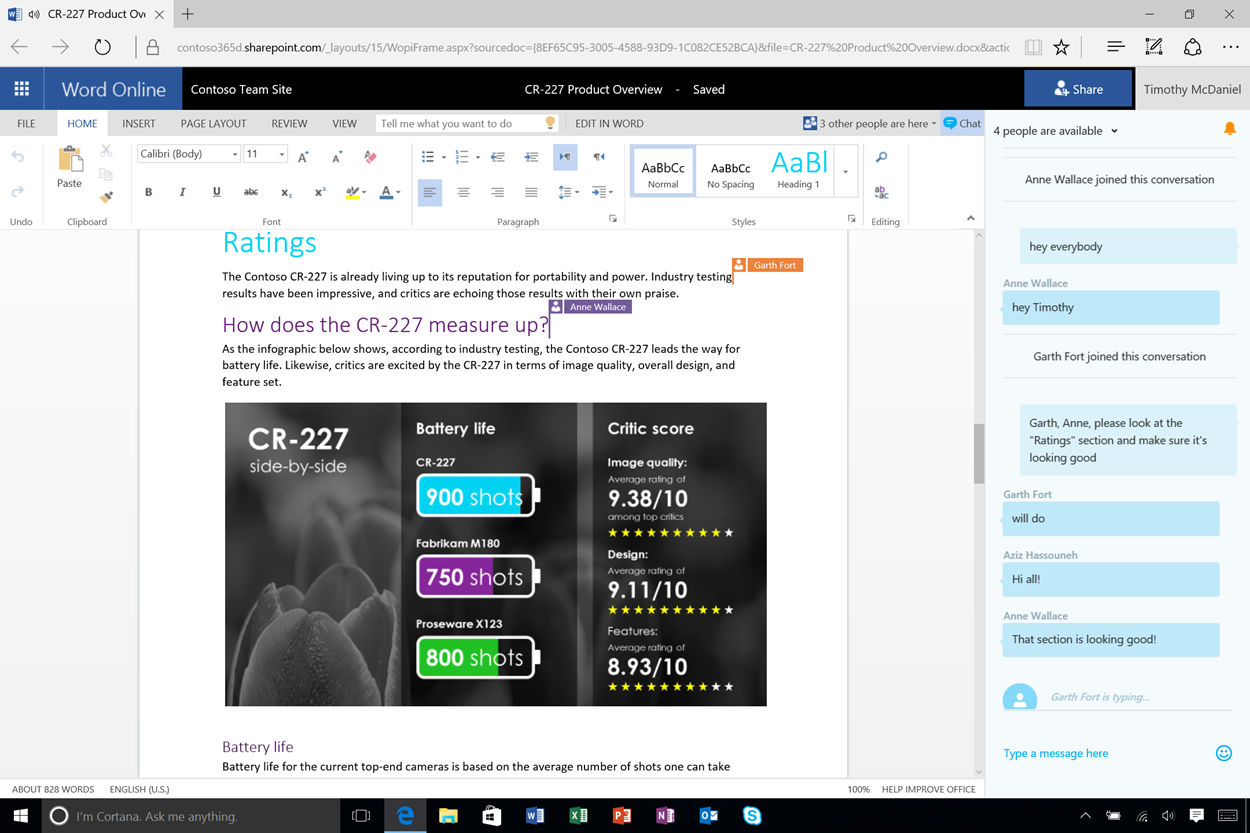Does anyone know how to 'Pin' a OneNote Notebook that is stored in Sharepoint? I can open/edit/save a notebook stored on Sharepoint. What I can't figure out how to do is Pin it so I can easily access it again without having to always open it through the Sharepoint website. (Pinning works fine on. If you open SharePoint, you will see your note saved in there. Click the link to the saved note in SharePoint and it will open the note in OneNote. Now, everyone in the document library will have access to the note. You can manage permissions in the document library. If your SharePoint site doesn’t currently have a notebook (most likely stored by default in “Site Assets”), you can add a new one in any of the following ways: In a document library. This is the best option for end-users or site owners adding a new notebook at any time. Click the “New” button; Select OneNote Notebook; Name Notebook.
OneDrive for Business (ODfB) and SharePoint Online (SP) are related components of Office 365, with overlapping architecture and features. If you use both OneDrive and SharePoint at work, it can get a little confusing.
Sharepoint 2016 Onenote Integration
The Basics
The first thing to keep in mind is that there is a consumer version of OneDrive that is very different from the OneDrive for Business component of your Office 365 subscription at work. If you have an existing Microsoft account, you already have OneDrive.
Anyone can sign up for a OneDrive account with any email address and get free or paid storage for your documents, photos, videos, and other files. This is your personal or individual OneDrive account. Home Office 365 plans also include personal OneDrive. Once you have a personal OneDrive account, you may set it to sync with your device (computer, tablet, phone, and so on).
If you use an Office 365 plan at work, you have your own OneDrive for Business. Despite the same name, personal or consumer-facing OneDrive does not have any overlap with OneDrive for Business. See how Microsoft explains it here.
You access your OneDrive for Business via the Office 365 portal sign-in. You can also sync ODfB with your device, and then you’ll be able to access your files in a local folder titled “OneDrive – [Your Business Name]” or “OneDrive @ Your Business Name.” By default everything stored in OneDrive for Business is visible only to you, but you can share files with individuals, groups, or everyone in your organization.



Similarly, you will have access to SharePoint sites via your Office 365 portal. The launcher menu item Office 365 is called Sites. You can store documents and other files there, as well as share and collaborate with your teammates. SharePoint also has sync capabilities. Sounds pretty similar to OneDrive for Business, right? So, what’s the difference?
Note From this point forward, we’ll be specifically covering OneDrive for Business, but one quick thing first. Remember how you can sign up for a personal/individual OneDrive using any email address? That includes your work email address. For example, I use a business Office 365 plan here at work with the BetterCloud Monitor. I sign in using my work email address, monitor@bettercloud.com, in order to access ODfB and SharePoint. But I can also use monitor@bettercloud.com to sign up for a personal OneDrive, which would be a totally separate account. Even though I may use the same email address and password to sign in, I can’t see my personal files in my business account and vice versa.
Onenote Sharepoint Vs Onedrive
ODfB vs. SP
As mentioned, you can store, sync, and share files with both OneDrive for Business and SharePoint. This table explains some of the similarities and differences of these components of Office 365.
OneDrive for Business | SharePoint Online |
| Included in Office 365 Business plans | Included in Office 365 Business plans |
| Available as a stand-alone service, and there is a similarly-named consumer version | Available as a stand-alone service, but no consumer-facing version exists |
| Evolved from a service called SharePoint Workspace 2010, and before that Groove 2007 | Cloud-based version of the SharePoint service that dates back to Office XP |
| Core architecture built on (or “powered behind the scenes” by) SharePoint | Core architecture built on (or “powered behind the scenes” by) SharePoint |
| Often considered or called a “storage location” | Often considered or called a “team site” |
| Could be thought of as the cloud version of the My Documents folder on your work computer | Could be thought of as an internal website and/or file server alternative |
| Manage files/data with metadata and versioning | Manage files/data with metadata and versioning |
| Accessed from browser or local folder or app depending on user preference | Usually accessed from a browser to use all features, but files can be accessed from local folder |
| OneDrive for Business sync app is used to sync OneDrive for Business files to a folder on local computer | OneDrive for Business sync app is used to sync SharePoint files to a folder on local computer (separate from OneDrive for Business folder) |
| All uploads default as private until you decide to share | Uploads default to inherit permissions from the directory/folder in which they are uploaded |
| Users sign in to their own OneDrive for Business accounts, with no shared interface | Users can access SharePoint as a branded company page, managed by an admin, that acts as a dashboard with news, calendar, etc. |
| Best place to upload private work documents that only you intend to see, or a document that has a limited scope or lifecycle (for example, a doc you only share once) | Best place to upload team files and/or documents that are intended to be collaborative and/or use check-in workflows and permissioning |
Onenote And Sharepoint Syncing Issues
So, OneDrive for Business and SharePoint Online: not exactly the same, yet not entirely different.
Onenote Sharepoint Not Syncing
The real, noticeable differences will come with the way your workplace or department decides to use SharePoint. Organizations use SharePoint for project-based management sites, human resources portals, and more. OneDrive for Business uses SharePoint technology, but is better suited for storage and one-off sharing. Both of these components live in the cloud (it is Office 365, after all) and can sync files to your device so you can work anywhere.
